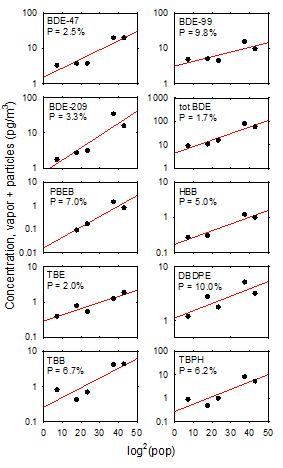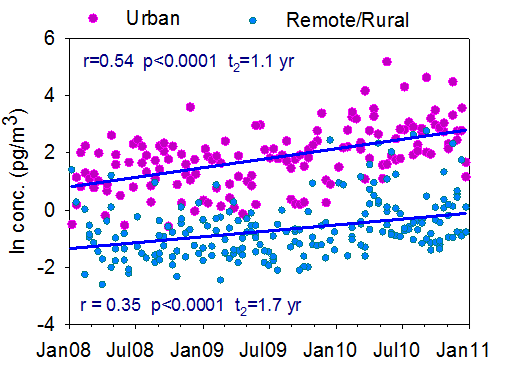Over the last several decades, there has been a rapid growth in flame retardant industry, and there are now more than 175 chemicals classified as flame retardants. These chemicals are used in a variety of consumer products including electronics, textiles, furniture, and toys. Of these, at least 75 are brominated flame retardants (BRFs). Among them, the polybrominated diphenyl ethers (PBDEs) have been widely used and are persistent and accumulate in the environment. As a result, the use of the Penta-, Octa-, and Deca-BDE commercial mixtures were restricted in the European Union, the production and use of the penta- and octa-mixtures in the United States was voluntarily phased out in 2004, and the production, import, and sale of the deca-BDE mixture in the United States will be discontinued by the end of 2013.
These restrictions have led to an increased market demand for nonregulated flame retardants. These include decabromodiphenylethane (DBDPE), 1,2-bis(2,4,6-tribromophenoxy)ethane (BTBPE), 2-ethylhexyl-2,3,4,5-tetrabromobenzoate (TBB), and bis(2-ethylhexyl)-tetrabromophthalate (TBPH), which have been marketed as alternatives to various PBDE formulations. In addition, “older” chemicals are sometimes being reintroduced to the market. These include hexabromobenzene (HBB) and pentabromoethylbenzene (PBEB), compounds that have apparently been manufactured for several decades.
In IADN samples, BFRs were found in the gas, particle, and precipitation phases. In general, the highest BFR concentrations were detected at the two urban sites (Chicago and Cleveland) and the lowest BFR concentrations were measured at the remote Eagle Harbor (EH) site in all three phases. This spatial distribution pattern in BFR concentrations can be explained by the fact that BFRs are used in consumer products, the abundance of which is proportional to population (see Figure).
Get more details



